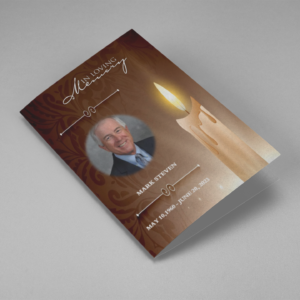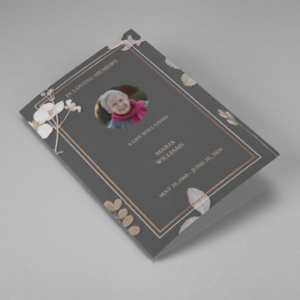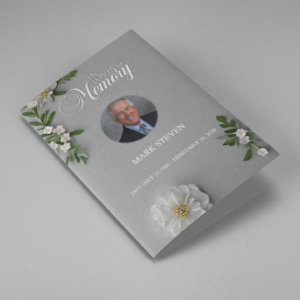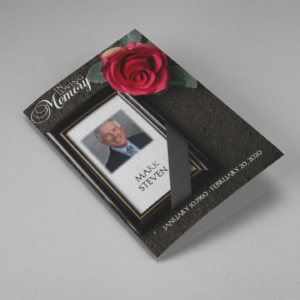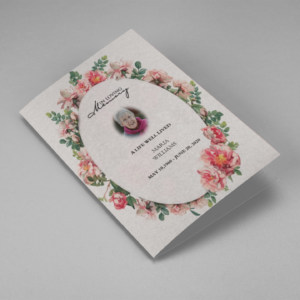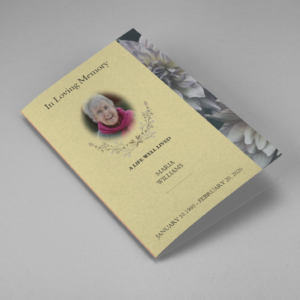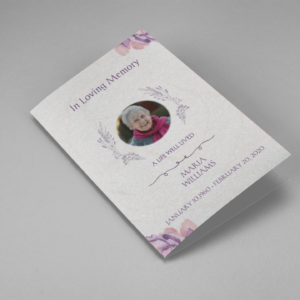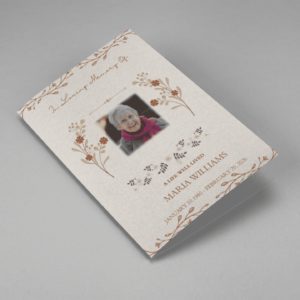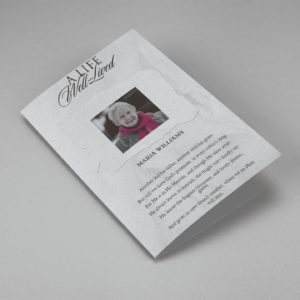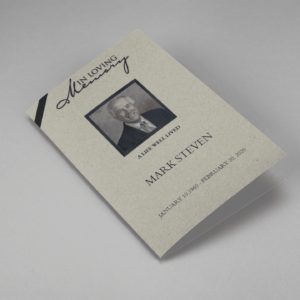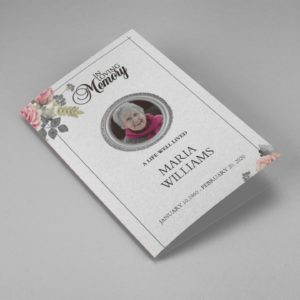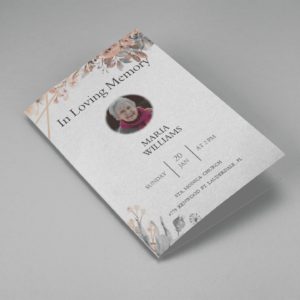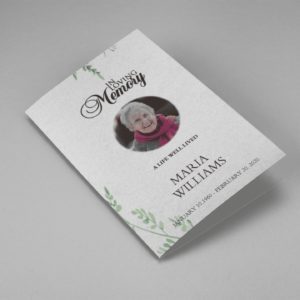Planning and creating an obituary can be a deeply personal process, allowing you to honor and memorialize a loved one. For those seeking a more personalized or budget-friendly approach, creating a DIY obituary template can be a meaningful option. This guide will walk you through the process of designing and writing an obituary template that is both professional and heartfelt.
What is an Obituary Template?
An obituary template is a pre-designed layout or framework that helps you organize the information and content for an obituary. It typically includes sections for key details about the deceased’s life, their achievements, family members, and arrangements for memorial services. Using a template can simplify the process, especially during an emotionally challenging time.
Benefits of Creating a DIY Obituary Template
Cost-Effective
Using a DIY approach can save money that would otherwise be spent on professional design services.
Personal Touch
A DIY obituary allows you to include personal elements such as favorite colors, photos, or custom designs that reflect the personality of the departed.
Flexibility
With a DIY template, you have the freedom to make changes and updates as needed, ensuring all details are accurate and meaningful.
Steps to Create a DIY Obituary Template
Step 1: Choose a Software or Tool
There are several tools you can use to create your template:
- Microsoft Word or Google Docs: Great for simple, text-based templates.
- Canva: Ideal for visually appealing designs with customizable layouts.
- Adobe InDesign: Best for advanced users looking for professional-grade templates.
Step 2: Decide on the Layout
A well-structured layout is crucial for readability and aesthetics. Common sections include:
- Header: Title such as “In Loving Memory of” or “Celebrating the Life of.”
- Personal Details: Name, date of birth, and date of passing.
- Obituary Text: A narrative that captures the essence of the person’s life.
- Photo Section: A place for a favorite or recent photo of the deceased.
- Service Details: Date, time, and location of funeral or memorial services.
Step 3: Write the Content
Introduction
Start with a heartfelt opening that acknowledges the passing of your loved one. For example:
“It is with great sorrow that we announce the passing of [Name], who left us on [Date]. [Name] was a beloved [relation, e.g., father, mother, friend], whose warmth and kindness touched everyone around them.”
Life Story
Include significant milestones, achievements, and personal anecdotes that highlight their character. Be sure to:
- Mention their education, career, and hobbies.
- Reflect on their impact on family and community.
- Share any special quotes or sayings they cherished.
Family Members
List surviving family members such as spouses, children, and grandchildren, as well as those who predeceased them. Example:
“[Name] is survived by their loving spouse [Name], children [Names], and grandchildren [Names]. They are reunited in heaven with [Names of predeceased loved ones].”
Service Information
Provide clear details about the memorial services:
- Date and Time: Ensure it is accurate to avoid confusion.
- Location: Include the full address.
- Special Instructions: Mention dress codes or requests for donations instead of flowers.
Step 4: Add Visual Elements
Incorporate photos, borders, and background designs to make the template visually appealing. Tools like Canva offer a wide range of free and premium design elements to enhance your template.
Step 5: Review and Finalize
Carefully proofread the obituary for any errors in spelling, dates, or details. Share the draft with family members to gather feedback and ensure it captures the essence of your loved one.
Tips for Personalizing Your DIY Obituary Template
Use Meaningful Colors
Select colors that reflect the personality or favorite hues of the deceased. For instance, soft blues or greens can evoke calmness, while brighter colors may celebrate a vibrant personality.
Add Quotes or Poems
Incorporate a meaningful quote or poem that resonates with the memory of your loved one. Examples include:
“Those we love don’t go away, they walk beside us every day.”
Choose Appropriate Fonts
Opt for elegant and readable fonts. Popular choices include:
- Times New Roman: Classic and formal.
- Arial: Modern and clean.
- Script Fonts: For a more decorative touch.
Examples of DIY Obituary Templates
Simple Text-Based Template
| In Loving Memory of |
|---|
| [Full Name] |
| [Date of Birth] – [Date] |
*”It is with heavy hearts that we announce the passing of [Name], a cherished [relation].”
Photo-Centric Template
A design that prominently features a photo at the center, with text arranged around it. This is ideal for showcasing the individual’s personality visually.
Obituary Templates
-
Searching for a White Roses And Black Ribbon Funeral Program Template that is easy to print and has a cutting-edge look? White Roses And Black Ribbon Funeral Program Template is the Perfect decision because it measures 8.5”x 11”.
- No Limitation on Content, Edit anything
- Edit anytime – unlimited revisions even after purchased
- Get a printable PDF downloaded to get it printed on your own
-
Searching for a Realistic Burning Candle Funeral Program Template that is easy to print and has a cutting-edge look? Realistic Burning Candle Funeral Program Template is the Perfect decision because it measures 8.5”x 11”.
- No Limitation on Content, Edit anything
- Edit anytime – unlimited revisions even after purchased
- Get a printable PDF downloaded to get it printed on your own
-
Searching for a Bulltongue Arrowhead Funeral Program Template that is easy to print and has a cutting-edge look? Bulltongue Arrowhead Funeral Program Template is the Perfect decision because it measures 8.5”x 11”.
- No Limitation on Content, Edit anything
- Edit anytime – unlimited revisions even after purchased
- Get a printable PDF downloaded to get it printed on your own
-
Searching for a Grey Floral White Tiny Flower Funeral Program Template that is easy to print and has a cutting-edge look? Grey Floral White Tiny Flower Funeral Program Template is the Perfect decision because it measures 8.5”x 11”.
- No Limitation on Content, Edit anything
- Edit anytime – unlimited revisions even after purchased
- Get a printable PDF downloaded to get it printed on your own
-
Searching for a Red Flower Dark Soil Funeral Program Template that is easy to print and has a cutting-edge look? Red Flower Dark Soil Funeral Program Template is the Perfect decision because it measures 8.5”x 11”.
- No Limitation on Content, Edit anything
- Edit anytime – unlimited revisions even after purchased
- Get a printable PDF downloaded to get it printed on your own
-
Searching for a Pink Rose Frame Floral Oval Badge Funeral Program Template that is easy to print and has a cutting-edge look? Pink Rose Frame Floral Oval Badge Funeral Program Template is the Perfect decision because it measures 8.5”x 11”.
- No Limitation on Content, Edit anything
- Edit anytime – unlimited revisions even after purchased
- Get a printable PDF downloaded to get it printed on your own
-
Searching for a Brown and White Classic Funeral Program Template that is easy to print and has a cutting-edge look? Brown and White Classic Funeral Program Template is the Perfect decision because it measures 8.5”x 11”.
- No Limitation on Content, Edit anything
- Edit anytime – unlimited revisions even after purchased
- Get a printable PDF downloaded to get it printed on your own
-
Searching for a Purple Elegant Watercolor Funeral Program Template that is easy to print and has a cutting-edge look? Purple Elegant Watercolor Funeral Program Template is the Perfect decision because it measures 8.5”x 11”.
- No Limitation on Content, Edit anything
- Edit anytime – unlimited revisions even after purchased
- Get a printable PDF downloaded to get it printed on your own
-
Searching for a Cream and Green Photo Obituary Program that is easy to print and has a cutting-edge look? Cream and Green Photo Obituary Program is the Perfect decision because it measures 8.5”x 11”.
- No Limitation on Content, Edit anything
- Edit anytime – unlimited revisions even after purchased
- Get a printable PDF downloaded to get it printed on your own
-
Searching for a Cream Simple Elegant Photo Church Program that is easy to print and has a cutting-edge look? Cream Simple Elegant Photo Church Program is the Perfect decision because it measures 8.5”x 11”.
- No Limitation on Content, Edit anything
- Edit anytime – unlimited revisions even after purchased
- Get a printable PDF downloaded to get it printed on your own
-
Searching for a Grey Classic Minimalist Funeral Program Template that is easy to print and has a cutting-edge look? Grey Classic Minimalist Funeral Program Template is the Perfect decision because it measures 8.5”x 11”.
- No Limitation on Content, Edit anything
- Edit anytime – unlimited revisions even after purchased
- Get a printable PDF downloaded to get it printed on your own
-
Searching for a White Classic Funeral Program Template that is easy to print and has a cutting-edge look? White Classic Funeral Program Template is the Perfect decision because it measures 8.5”x 11”.
- No Limitation on Content, Edit anything
- Edit anytime – unlimited revisions even after purchased
- Get a printable PDF downloaded to get it printed on your own
-
Searching for a Cream Gold Marble Funeral Program Template that is easy to print and has a cutting-edge look? Cream Gold Marble Funeral Program Template is the Perfect decision because it measures 8.5”x 11”.
- No Limitation on Content, Edit anything
- Edit anytime – unlimited revisions even after purchased
- Get a printable PDF downloaded to get it printed on your own
-
Searching for an Elegant Beige Funeral Program Template that is easy to print and has a cutting-edge look? Elegant Beige Funeral Program Template is the Perfect decision because is has a measure of 8.5”x 11”.
- No Limitation on Content, Edit anything
- Edit anytime – unlimited revisions even after purchased
- Get a printable PDF downloaded to get it printed on your own
-
Searching for a White Floral Pro Funeral Program Template that is easy to print and has a cutting-edge look? White Floral Pro Funeral Program Template is the Perfect decision because is has a measure of 8.5”x 11”.
- No Limitation on Content, Edit anything
- Edit anytime – unlimited revisions even after purchased
- Get a printable PDF downloaded to get it printed on your own
-
Searching for a Grey and Burgundy Elegant Funeral Program Template that is easy to print and has a cutting-edge look? Grey and Burgundy Elegant Funeral Program Template is the Perfect decision because is has a measure of 8.5”x 11”.
- No Limitation on Content, Edit anything
- Edit anytime – unlimited revisions even after purchased
- Get a printable PDF downloaded to get it printed on your own
-
Searching for a Creative Watercolor Floral Funeral Program Template that is easy to print and has a cutting-edge look? Creative Watercolor Floral Funeral Program Template is the Perfect decision because is has a measure of 8.5”x 11”.
- No Limitation on Content, Edit anything
- Edit anytime – unlimited revisions even after purchased
- Get a printable PDF downloaded to get it printed on your own
-
Searching for a Soft Green and Grey Minimalist Floral Funeral Program Template that is easy to print and has a cutting-edge look?Soft Green and Grey Minimalist Floral Funeral Program Template is the Perfect decision because is has a measure of 8.5”x 11”.
- No Limitation on Content, Edit anything
- Edit anytime – unlimited revisions even after purchased
- Get a printable PDF downloaded to get it printed on your own
-
Searching for a Green Natural Funeral Program Template that is easy to print and has a cutting-edge look? Green Natural Funeral Program Template is the Perfect decision because is has a measure of 8.5”x 11”.
- No Limitation on Content, Edit anything
- Edit anytime – unlimited revisions even after purchased
- Get a printable PDF downloaded to get it printed on your own
Funeral Programs : Videos For Help
Frequently Asked Question On DIY Obituary Template
What should I include in an obituary template?
Include the deceased’s full name, dates of birth and passing, a summary of their life, surviving family members, and details about memorial services.
Can I use free tools to create a DIY obituary?
Yes, our tool is free to use and create your obituary .
How can I make the obituary more personal?
Incorporate personal anecdotes, favorite quotes, and photos that reflect the individual’s personality and legacy.
Is it necessary to include service details in an obituary?
Yes, including service details ensures attendees have all the necessary information to participate in the memorial.



